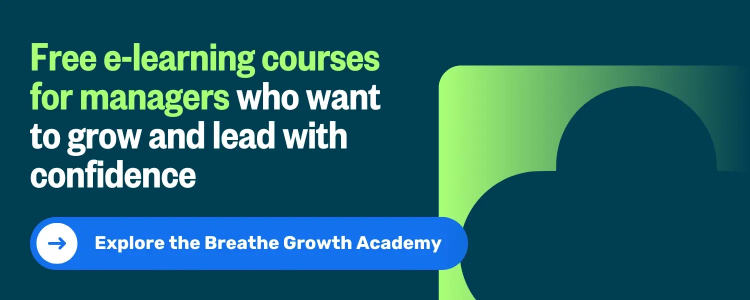2. Authoritative leadership style | The visionary
The visionary leader, or authoritative leadership style as it's known to Goleman, is our more creative, eccentric and maverick teacher. They take a “come with me” approach, as they lead the business into their vision of what success could look like.
Stuffed with self-confidence and enough emotional intelligence to offer sincere empathy to others, this leadership style oozes charisma and enjoys expressing their ideas with clarity and passion.
Research shows a link between authoritative and coaching type leadership styles with employee satisfaction and positive performance.
Example: Satya Nadella is an example of an authoritative leader who has transformed business at Microsoft by envisioning and setting a clear vision for the future.
3. Affiliative leadership style | The carer
An affiliative leadership style puts people first and focuses on creating a harmonoious working environment by building emotional bonds.
The affiliative leadership style requires lots of empathy and the ability to build relationships through a range of communication styles.
This tact proves particularly helpful during stressful circumstances, and if applied well, can help to motivate employees to continue through the tough times. It can also be used to heal rifts in a team or to establish new teams.
On the flip side, this leader can struggle to understand how to improve poor performance and may be more hesitant to provide advice.
Example: Founder of the OWN TV channel, Oprah Winfrey puts her people's success first, making her an affiliative leader.
4. Democratic leadership style | The listener
“So, what do you think?” is a phrase you can expect to hear from leaders demonstrating the democratic leadership style of management. They work hard to develop consensus through participation, using their skills of collaboration and excellent communication to lead their team.
From polls and surveys to feedback and questionnaires, a democratic leadership style relies heavily on the views and opinions of their team.
These leaders are typically able to incorporate the broad spectrum of ideas, views and input from valuable employees, leaders and stakeholders to their advantage. So, in a nutshell, great for managing change and an agile workforce.
Studies show that this leadership style often leads to higher morale, improved productivity and increased satisfaction
Example: Sheryl Sandberg, former COO at Meta/Facebook, was known as a democratic leader by encouraging open communication and shared responsibility.
Top tip: Structure meetings by setting out rules and boundaries. Record these somewhere accessible, like your company documents section on Breathe. We'll even send you a notification once your team has read it and are up to speed.
5. Pace-setting leadership style | The hustler
With the highest of expectations, this style of leadership wants tasks completed yesterday. “Do as I do and do it now" is their motto.
This approach is well-suited to highly competent and motivated teams, working to tight deadlines. Perhaps not the best-suited to everyday environments and less-pressured settings.
The drive to succeed and strong initiative of this leadership style is certainly admirable. However, tread with caution. Because of their own incredible passion and discipline, this type of leader could intimidate and unknowingly pressure employees.
Remember to walk a mile in their shoes and avoid micromanagement when considering an individual's workload.
Example: While CEO of Amazon, Jeff Bezos demonstrated a pace-setting leadership style, consistently setting high expectations for innovation and customer service, and pushing the company to rapidly expand and dominate multiple markets.
Try Breathe for free. No strings, no credit card needed.
6. Coaching leadership style | The mentor
With an eye on the long-term, the coaching style of leadership focuses on developing others.
With a strong sense of encouragement and focus on the individual, this leadership style is built on the idea that every step forward counts.
And that's how it works to bring out the best in people. Adjusting yet pushing the bar for consistent growth, while empowering their mentees to learn the skills that will drive the business forward.
Great coaches understand their team and accept that they, just like their people, are constantly learning.
Example: Eric Partaker, now known as The CEO Coach, uses a coaching leadership style, promoting the importance of always investing in your team's future.
Together, these six leadership styles offer leaders the flexibility to respond to different challenges and team needs.
Common concerns about leadership styles
No leadership style is perfect - and that's okay.
Each approach has it's strengths, but also its limits. Coercive leadership might get quick results in a crisis, but used too often, it can stifle creativity and lower morale. Similarly, a pacesetting leader might drive high performance but risk burning people out if expectations aren't realistic.
Even people-focused styles like the coaching or affiliative leadership styles can bring challenges. Without clear direction, teams might lack accountability or feel unsure about expectations.
It's natural to question which style is right - or worry that you don't fit neatly into one category. The truth is, most leaders don't. Great leadership often comes from being flexible, knowing your team, and making thoughtful choices in the moment. In fact, research suggests that the best leaders often use a mixture of leadership styles, choosing carefully when to use different approaches.
By recognising the potential pitfalls of each style, you can lead more consciously and avoid relying too heavily on one approach. It's about finding a balance that works for your people and your business.
The impact of leadership on employee satisfaction
How you lead directly shapes how your people feel at work.
Leadership style plays a big role in employee satisfaction - from how connected your team feels to the business, to their motivation, wellbeing and overall performance.
When people feel heard, supported and empowered, they're more likely to be engaged and stay with your business. And disengaged employees are costly - nearly 90% of UK workers report feeling disengaged at work, while other research shows that highly engaged organisations are 21% more profitable.
Trust in leadership also matters. Only 38% of UK employees trust senior leaders, and that trust is key to culture, retention and business performance.
Strong leadership can improve trust, morale and retention - and ultimately business results.
What's your leadership style?

Each of us naturally leans towards one or two styles of leadership. The trick is not to view them as fixed. That’s because research shows that leaders who sit in-between leadership styles deliver the best results.
Flexing between leadership styles makes sense - when no two days in business are the same; you can’t expect to work the same and achieve different results. Especially if you work in the HR industry.
Try to use different techniques and traits from the leadership styles you identify most with, making sure you adapt to the specific situation.
Ultimately, it comes back to knowing your team, their strengths, preferred communication methods and challenges - while nurturing your culture, values and vision. Learn how to lead them and you’ll see strong results.
Want to learn how to flex your leadership style with confidence?
The Breathe Growth Academy, Line Manager Essentials training helps you build the core skills every people manager needs – from feedback and communication to motivation and boundaries. The courses are free, short and practical – making it easy to learn, wherever you are and whenever it suits you.








